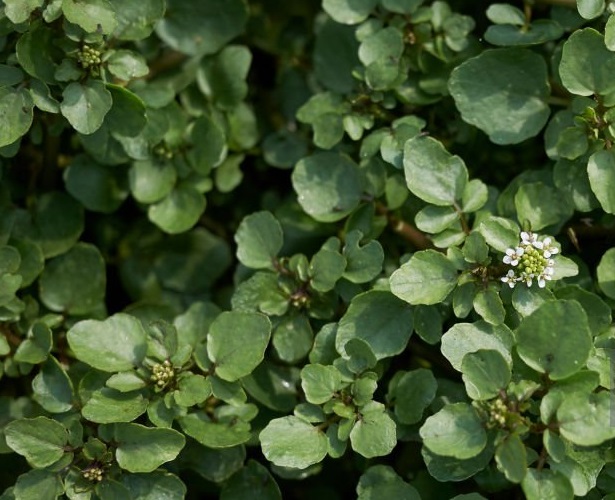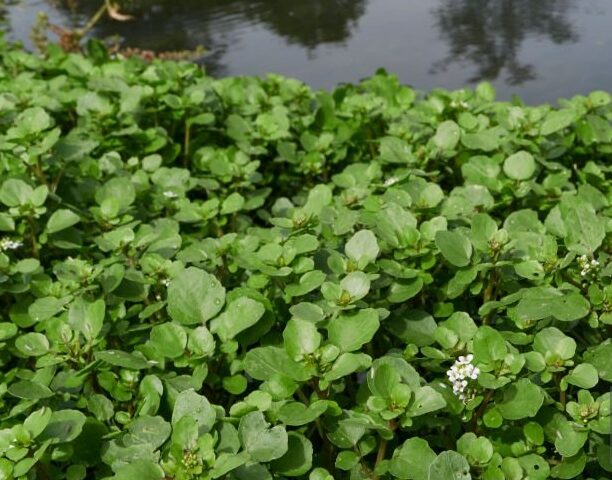As the cooler months approach, one of the most enjoyable wild edibles to forage is watercress (Nasturtium officinale). This flavorful green is often found in slow-moving streams and freshwater springs, making it a refreshing addition to your foraging adventures in November. In this blog, I’ll share where to find it, how to identify its edible parts, and some delicious ways to use it in your kitchen.
What is Watercress?

Watercress is a semi-aquatic plant with small, round, dark green leaves and delicate white flowers. Its slightly peppery flavor adds a unique zing to dishes, setting it apart from other leafy greens. I appreciate watercress not only for its taste but also for its impressive nutritional profile. It’s rich in vitamins A, C, and K, as well as calcium and iron, making it a powerhouse of nutrients.
Where to Find Watercress
When foraging for watercress, look for it growing in slow-moving streams, freshwater springs, or even along the edges of ponds. This plant thrives in clean, fresh water, so it’s essential to choose locations that are free from pollutants. Watercress can often be spotted in clusters, forming dense patches in shallow water. November is an excellent time to gather it, as the cooler weather helps enhance its flavor and tenderness.
Edible Parts of Watercress
The leaves and stems of watercress are the edible parts. The leaves are crisp and flavorful, while the stems add a delightful crunch. I love incorporating watercress into various dishes because its peppery flavor pairs well with many ingredients. It’s particularly delightful in salads, sandwiches, or as a garnish for soups and entrees.
How to Harvest Watercress
Harvesting watercress is a straightforward process. I typically use scissors to cut the stems just above the water line, ensuring I leave the roots intact for regrowth. It’s important to only gather what you need and to avoid overharvesting. Before consuming, be sure to rinse the watercress thoroughly to remove any dirt or debris, especially since it grows in water.
Cooking with Watercress
Watercress can be enjoyed in a variety of ways. One of my favorite uses is in a fresh salad, where its peppery flavor can shine. Here’s a simple recipe I enjoy:
Watercress Salad Recipe:
- Gather a handful of fresh watercress leaves and stems.
- Toss them with sliced cucumbers, cherry tomatoes, and a sprinkle of feta cheese.
- Drizzle with olive oil and balsamic vinegar, adding salt and pepper to taste.
- Serve chilled for a refreshing side dish.
Watercress also works wonderfully in sandwiches, adding a zesty crunch. I often layer it with turkey or chicken and other fresh vegetables for a satisfying meal. Additionally, it can be blended into soups for added flavor or used as a garnish to elevate your dishes.
Nutritional Benefits
In addition to its culinary uses, watercress is a nutritional powerhouse. It is packed with vitamins A, C, and K, as well as essential minerals like calcium and iron. These nutrients contribute to overall health, supporting the immune system and promoting healthy bones. Including watercress in your diet can enhance your meals while providing a boost of nutrition.
Conclusion
Watercress (Nasturtium officinale) is a delightful wild edible that offers both culinary versatility and impressive nutritional benefits. As you venture into the slow-moving streams and freshwater springs this November, you can enjoy the experience of foraging for this vibrant green. Whether you incorporate watercress into salads, sandwiches, or as a garnish, its peppery flavor and crisp texture will enhance your meals while connecting you to the natural world.
As with all foraged foods, remember to harvest responsibly, ensuring you accurately identify watercress and adhere to local guidelines. By embracing this flavorful wild green, you’ll not only enrich your diet but also deepen your appreciation for the abundance of nature. Happy foraging!
Foraging Disclaimer
Foraging for wild edibles like watercress (Nasturtium officinale) can be a rewarding experience, but it’s essential to do so with caution. Always positively identify any plant before consuming it, as some plants can be toxic. If you’re uncertain about a plant’s identity, consult reliable field guides or foraging experts. Additionally, be mindful of local regulations and avoid harvesting from areas that may be contaminated with pesticides or pollutants. If you have allergies or health concerns, please consult a healthcare professional before trying new wild edibles. Enjoy your foraging adventures responsibly!
